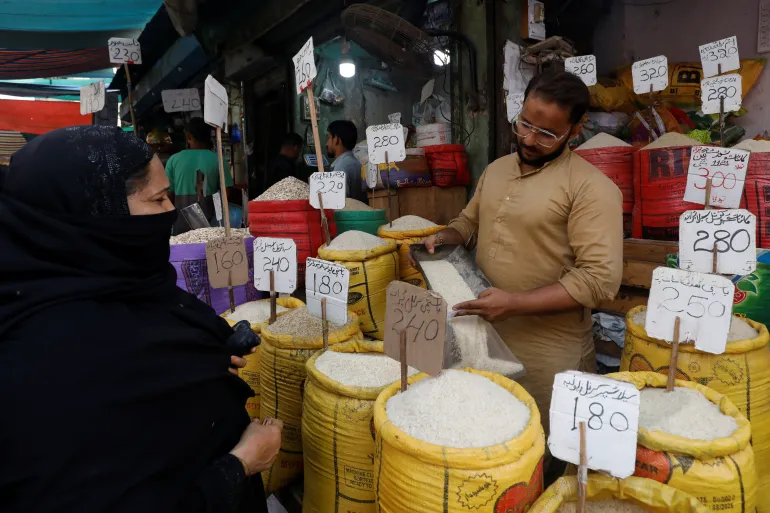
Exporters fear a pricing war as the South Asian rivals lift restrictions on global sales of rice.
The global prices for different varieties of rice dropped on Monday after India and Pakistan made tit-for-tat moves to eliminate price caps and resume rice exports.
On Saturday, the Indian government lifted a ban on the export of non-Basmati white rice more than a year after it blocked overseas sales, with a larger crop yield in 2024 bolstering state warehouse reserves for domestic needs.
This decision followed Pakistan’s announcement a day earlier to withdraw the minimum export price (MEP) for all rice varieties, a measure that had been in place since 2023 and set at $1,300 per metric tonne for Basmati rice, and $550 for non-Basmati rice.
Pakistan’s decision was influenced by India’s earlier removal of the MEP of $950 per metric tonne for Basmati rice in September
India and Pakistan are the only countries that produce Basmati rice, known as “scented pearl”, for its unique flavour and aroma
In a notification issued on September 28, Jam Kamal Khan, Pakistan’s commerce minister, said the government acted on a request from the Rice Exporters Association of Pakistan (REAP) to eliminate the MEP.
The battle for the rice market
India is the world’s largest rice exporter, accounting for nearly 40 percent of global rice trade and holding a 65 percent market share in the Basmati sector. Pakistan, the fourth-largest rice exporter after Thailand and Vietnam, retains the remaining 35 percent of the Basmati market.
In the 2022-23 fiscal year, India earned more than $11bn from rice sales, with more than 4.5 million metric tonnes of Basmati rice alone generating more than $4.7bn.
But in July 2023, high inflation, rising food prices, and concerns about potential production shortages caused by the El Niño weather phenomenon made the Indian government impose an export ban on non-Basmati rice, less than a year before national elections.
This variety of rice is what India’s public distribution system relies on to fulfil domestic demand. A month later, India also imposed curbs on Basmati exports
An unintended beneficiary? Pakistani rice exports.
As Indian rice became scarce, Pakistan emerged as one of the alternative suppliers for many countries, including those in the Gulf, Africa, and Southeast Asia.
From July 2023 to June 2024, Pakistan experienced more than 60 percent growth in its rice export volume and a 78 percent increase in value, generating nearly $3.9bn from the export of almost six million metric tonnes of rice, including about 750,000 metric tonnes of Basmati rice.
However, Chela Ram Kewlani, a former chairman of REAP, says now with Indian rice coming back to the international market in large volume, imposing a MEP would hurt Pakistani rice exports
International market demand and supply is what regulates the rice price and now with India back in the business, our exports could have been impacted if we still had a MEP in place,” he told Al Jazeera.
Haseeb Khan, senior vice chairperson of REAP, also praised the government’s decision to lift the price cap, stating it would help Pakistani exporters strengthen their presence in new markets
Last fiscal year, Pakistan’s rice output rose to nearly 9.8 million metric tonnes, with experts forecasting an increase to more than 10 million metric tonnes this year, potentially leading to higher exports.
Domestically, Pakistanis primarily consume wheat – more than 120 kg per person annually, among the highest in the world. Rice consumption is much lower at less than 20 kg per person annually. Most parts of India, by contrast, consume rice far more than wheat.
“Volume-wise, we cannot compete with India, so we should have maintained some price floor instead of removing it entirely. Now anyone can sell at any price, which could perhaps increase sales volume but drive prices down,” he added
Zahid Khwaja, a founder of REAP and a farmer from Lahore, echoed these concerns, noting the differing dynamics and strategies of the two countries.
“India’s domestic issues led to their price floor and export ban, creating a market shortage. Now that they’ve lifted these restrictions, buyers will likely rush to stock up on Indian rice rather than continue purchasing from Pakistan,” he said
